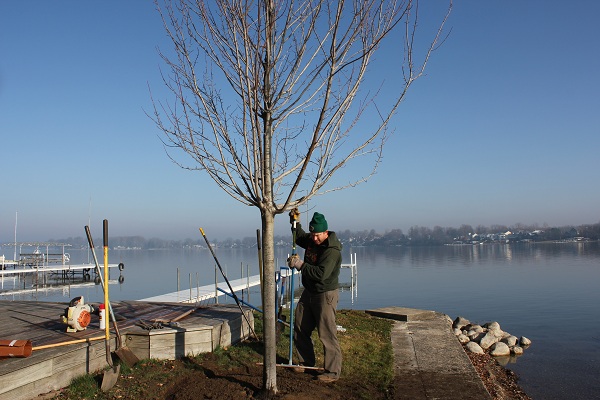Tips for Pruning Trees
You have trees of varying size and age. They’ll need pruning at some point to keep them healthy and to keep them the right size for the yard. Remove lower tree limbs to allow the trees to canopy, for visual appeal and improve views.
How much do I prune?
Rule of the thumb, never over prune! This may kill the tree, or make it ugly. Roughly, 25% of the tree crown may be pruned annually.
Cut the branches at a diagonal, following the same direction the tree bud is growing; and cut well above the bud. A tree that’s in poor health or weak will need little to no pruning.
There are several factors to consider when determining the amount of pruning you need to do:
- Species, age, condition, size and placement of the tree. Many tree species branch comparatively low near the ground, such as Magnolias, Dogwood, and Maple.
- Consider also the current and mature height of the tree. For instance, the first 10 feet of a 100-foot oak tree’s will not have a big impact as the first 10 feet of a 12- foot tall crabapple.
- The clearance needed above the tree. The overhead space required to mow under a canopy is much lower than the overhead space needed for a UPS truck to pass comfortably or utility wires to pass safely overhead.
Prune to prevent damage
Check the growth patterns of your trees. You’ll want the permanent branches to be evenly spaced between 12” and 18” apart. It’s best you remove additional leaders when your tree is young. However, don’t prune off the lower branches.
These might not be permanent branches but will help in the development of a strong trunk, protect the tree’s bark from sunscald and give physical protection from machinery and animals.
Remove any branches early when you notice that they are growing at a tight angle to the tree. A tight angle may cause the bark to overgrow, making the branch break and deform the tree, which can cause disease and pest issues.
When is the right time to prune?
Time to prune depends on why you prune. Removing dead wood and light pruning can be done at any time. Otherwise, pruning is determined by the season.
Winter Pruning
It’s highly advisable to prune your trees during dormancy. This encourages an active burst of new growth during spring and should be used if this what you desire.
Wait till the coldest part of winter passes. Some tree species such as walnuts, birches, and maple, may “bleed”— when the sap starts to flow. This will stop when the tree leaves appear.
Summer Pruning
Reasons for summer pruning include: Pruning after seasonal growth to slow the growth of branches you don’t want.
Reduce total leaf surface. For corrective purposes – Defective branches and limbs can be seen easily under the weight of the leaves.
Pruning to Enhance Flowering
To enhance flowering, prune trees that bloom in spring when the flowers are fading. Good arborists and landscapers are comfortable pruning large trees all the way down to the small ornamental trees besides your sidewalk.


